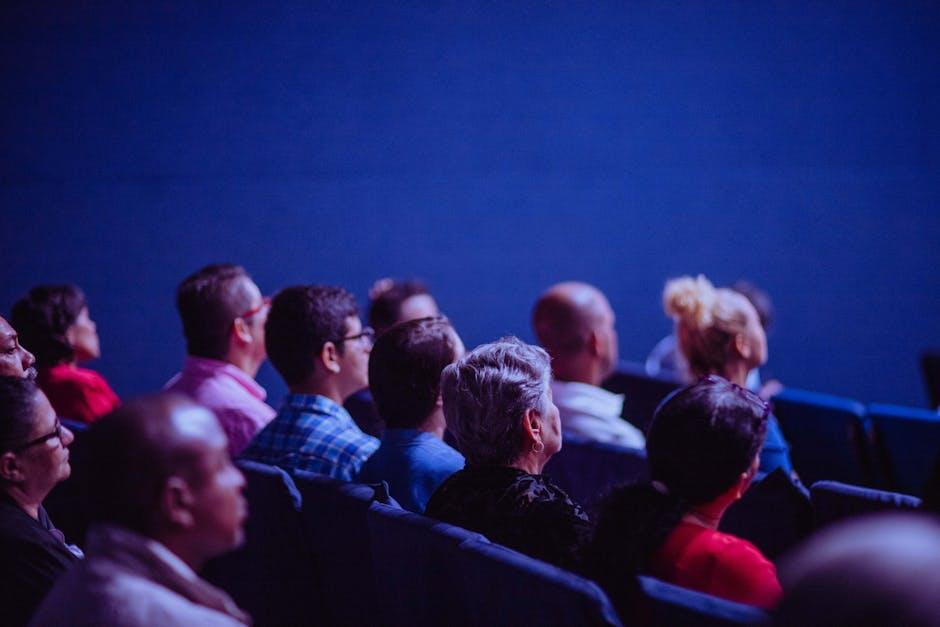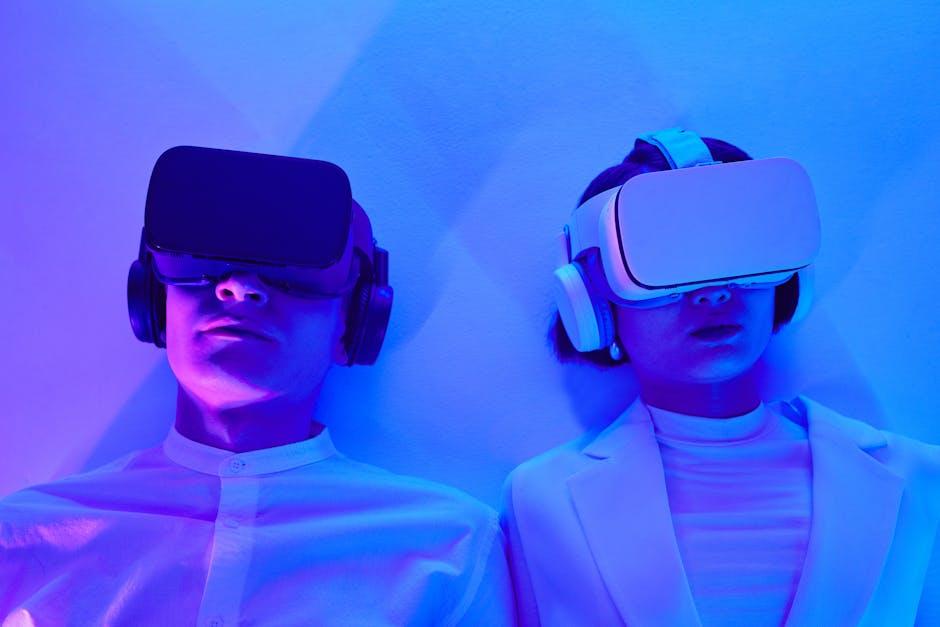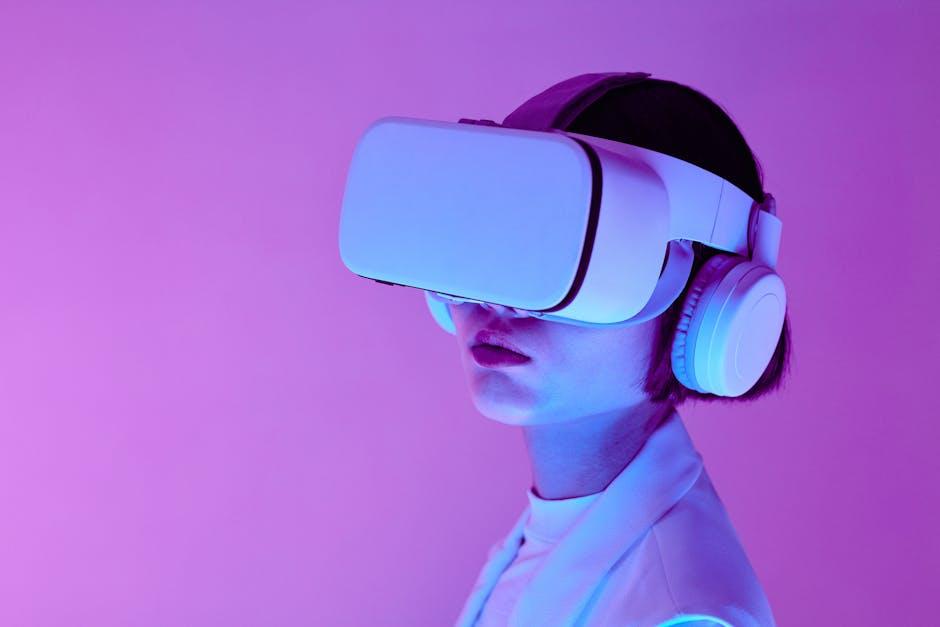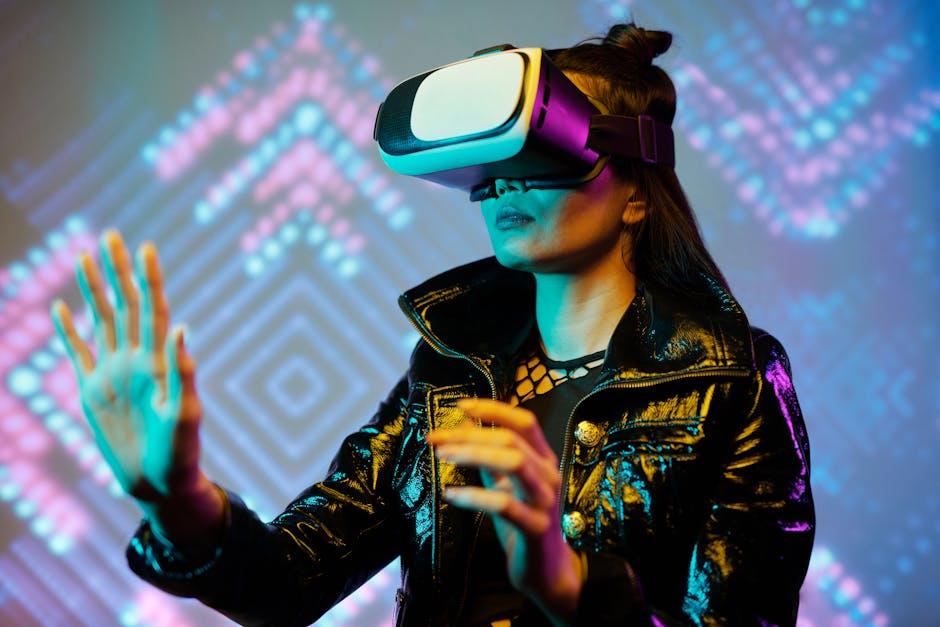In the ever-evolving landscape of entertainment, a quiet revolution is unfolding—one driven not by human hands alone, but by the intricate algorithms of artificial intelligence. From rewriting storylines to composing symphonies and generating stunning visual effects, AI is reshaping how stories are told, experienced, and shared. As creativity intertwines with technology, the boundaries of imagination expand, opening new horizons for artists and audiences alike. This article explores the multifaceted ways in which AI is transforming the entertainment industry, revealing both its potential and the challenges that come with this digital renaissance.
Table of Contents
- Transforming Storytelling with AI-Driven Content Creation
- Revolutionizing Visual Effects and Animation Techniques
- Enhancing Audience Engagement Through Personalized Experiences
- The Role of AI in Music Composition and Sound Design
- Ethical Considerations and Challenges in AI-Powered Entertainment
- Future Trends and Practical Strategies for Embracing AI Innovations
- Q&A
- Future Outlook

Transforming Storytelling with AI-Driven Content Creation
AI-driven content creation is revolutionizing the way stories are crafted and experienced. By harnessing advanced algorithms and machine learning, creators can now generate narratives that dynamically adapt to audience preferences, personalizing entertainment like never before. This innovation enables writers and producers to explore complex plot twists, develop multidimensional characters instantly, and even co-create with AI tools that suggest innovative ideas, speeding up the storytelling process and expanding creative possibilities.
Key benefits of AI in content generation include:
- Efficiency: Rapid production of drafts and scripts.
- Customization: Tailored storytelling for diverse audiences.
- Innovation: Fresh ideas sparked through data-driven insights.
- Collaboration: Seamless interaction between human creativity and AI assistance.
| Story Element | AI Contribution | Impact |
|---|---|---|
| Plot Development | Dynamic branching narratives | Engages viewers with personalized paths |
| Character Building | AI-generated backstories | Enhances depth and relatability |
| Dialogue Writing | Context-aware responses | Natural and immersive conversations |

Revolutionizing Visual Effects and Animation Techniques
Artificial intelligence has ushered in a new era where the boundaries of creativity in visual effects and animation are continually expanding. From photorealistic rendering to real-time motion capture enhancements, AI algorithms analyze vast datasets to generate effects with unprecedented precision. This revolution allows creators to bypass time-consuming manual processes, enabling more immersive worlds and characters that resonate deeply with audiences. Studios now harness AI-driven tools that can predict and simulate natural phenomena like smoke, fire, and water, delivering hyper-realistic animations that were once deemed impossible.
Key transformations in this space include:
- AI-assisted frame interpolation: Smoothing and enhancing animation sequences effortlessly.
- Automated texture generation: Crafting intricate surfaces with minimal human input.
- Deep learning for facial animation: Capturing subtle expressions that bring digital characters to life.
- Procedural storytelling tools: Dynamically adapting animated narratives based on audience interaction.
| Technique | AI Contribution | Impact |
|---|---|---|
| Motion Capture | Noise reduction & data refinement | Smoother, more natural movements |
| Texture Mapping | Automated pattern generation | Rich, diverse environments |
| Character Animation | Behavior prediction & adaptation | Realistic, emotional performances |

Enhancing Audience Engagement Through Personalized Experiences
Modern entertainment platforms are leveraging AI to craft experiences that feel uniquely tailored to each individual viewer or player. By analyzing preferences, behavior patterns, and real-time feedback, AI systems can offer dynamic content recommendations that evolve with the user’s tastes. This creates a continuous loop of engagement where audiences not only consume but actively participate in shaping their entertainment journey. The effect is a deeper connection that traditional one-size-fits-all content delivery simply can’t match.
Beyond recommendations, AI-driven personalization extends to interactive storytelling and adaptive gameplay, where plot twists and challenges respond directly to the user’s decisions. The technology is also changing live experiences, with AI-powered chatbots and virtual hosts that provide instant, context-aware interactions. Key innovations include:
- Emotion recognition: Adjusting scenes or music based on detected user mood.
- Real-time content adaptation: Customized storylines that respond to user choices or reactions.
- Personalized marketing: Tailored promotions and notifications enhancing the user journey.
| Feature | Audience Benefit | AI Role |
|---|---|---|
| Dynamic Storylines | Enhanced immersion | Analyzes user choices |
| Tailored Playlists | Content relevance | Predicts preferences |
| Virtual Hosts | Instant user support | Natural language processing |

The Role of AI in Music Composition and Sound Design
Advancements in artificial intelligence are revolutionizing the landscape of music creation, enabling composers and sound designers to explore new creative horizons. With AI-driven tools, artists can generate complex melodies, harmonies, and rhythms that were previously unthinkable, pushing the boundaries of traditional composition. These intelligent systems analyze vast music databases to learn styles and patterns, allowing for the synthesis of fresh, genre-blending sounds that resonate with diverse audiences. Additionally, AI assists in automating repetitive tasks such as mixing and mastering, freeing creators to focus more on the artistic aspects of their work.
Beyond composition, AI is also transforming sound design by producing unique audio textures and effects through deep learning models. This innovation is not only enhancing the immersive experience in movies, games, and virtual reality but also personalizing soundscapes to fit individual preferences or specific scenes. Key features of AI-powered music and sound design include:
- Adaptive sound generation that evolves with user interaction.
- Automated pattern recognition to mimic classic and emerging musical styles.
- Real-time audio manipulation for live performances and broadcasts.
| Use Case | AI Contribution |
|---|---|
| Film Scoring | Dynamic soundtrack generation for scene moods |
| Video Game Audio | Procedural sound effects responding to gameplay |
| Music Production | Instant composition suggestions and mixing automation |

Ethical Considerations and Challenges in AI-Powered Entertainment
As AI continues to weave itself into the fabric of entertainment, the ethical landscape grows increasingly complex. One major concern is the authorship and creative ownership of AI-generated works. When scripts, music, or visual art are produced by algorithms, questions arise about who holds the rights and how credit is allocated. Additionally, AI can sometimes reflect or amplify existing biases present in training data, unintentionally perpetuating stereotypes or misinformation, which poses significant risks in content creation and curation.
Furthermore, the rise of deepfake technology and synthetic media challenges authenticity and trust. Audiences may struggle to discern reality from AI-generated fabrications, leading to potential misinformation or manipulation. Entertainment platforms and creators alike face the uphill battle of finding a balance between innovation and responsibility, ensuring that AI advancements enhance the experience without compromising ethical standards. Below is a brief overview of key challenges:
- Ownership ambiguity in creative AI outputs
- Bias reinforcement from data-driven content
- Deepfake authenticity and misuse potential
- Privacy concerns in personalized entertainment
- Transparency regarding AI involvement

Future Trends and Practical Strategies for Embracing AI Innovations
As artificial intelligence continues to evolve, entertainment industries are poised to experience unprecedented transformation. One emerging trend is the integration of hyper-personalized content, where AI algorithms analyze viewer preferences and behaviors to craft tailor-made narratives, soundtracks, and visual effects. This shift not only enhances audience engagement but also opens opportunities for creators to experiment with dynamic storytelling, adjusting plots in real time according to user reactions. Additionally, AI-powered virtual influencers and performers are becoming increasingly common, blurring the lines between reality and digital artistry.
To thrive in this innovative landscape, creators and companies must adopt practical strategies centered on collaboration and ethical AI use. Emphasizing human-AI synergy allows artists to harness machine efficiency without sacrificing creative authenticity. Here are key approaches to consider:
- Continuous learning: Stay updated with AI advancements through workshops, webinars, and industry conferences.
- Experimentation with tools: Integrate AI-driven software for editing, animation, and sound design to streamline workflows.
- Ethical framework: Develop guidelines to ensure AI deployment respects privacy and promotes inclusivity.
- Cross-disciplinary teams: Foster collaborations between technologists and creatives to innovate responsibly.
| Trend | Benefit | Strategy |
|---|---|---|
| Adaptive Storytelling | Enhanced engagement | Real-time data analytics |
| Virtual Performers | Cost-effective innovation | AI-driven character design |
| Automated Editing | Faster production cycles | AI-powered editing suites |
Q&A
Q&A: How AI Is Changing Entertainment
Q1: What are some key ways AI is transforming the entertainment industry?
A1: AI is reshaping entertainment through personalized content recommendations, enhancing special effects with deep learning, automating scriptwriting and music composition, and enabling interactive experiences like AI-driven video game characters. These innovations enrich how audiences engage with films, music, games, and streaming platforms.
Q2: How does AI improve content recommendation systems?
A2: By analyzing users’ viewing habits, preferences, and even mood patterns, AI algorithms tailor content libraries to individual tastes. This not only heightens engagement but also helps platforms surface hidden gems that viewers might otherwise miss, creating smarter, more intuitive entertainment choices.
Q3: Can AI create original entertainment content?
A3: Yes! AI tools can generate scripts, compose music, and even design virtual actors. While human creativity remains central, AI acts as a collaborative partner—suggesting plot twists, crafting melodies, or animating virtual characters—thus expanding the boundaries of storytelling and creativity.
Q4: What impact does AI have on special effects and animation?
A4: AI accelerates the visual effects workflow by automating labor-intensive tasks like rotoscoping, 3D modeling, and rendering. It also enhances realism with deepfake technology and neural rendering techniques, making characters and environments more lifelike while reducing production costs and time.
Q5: How is AI changing interactive entertainment such as gaming?
A5: AI enables more responsive, adaptive non-player characters (NPCs) that learn and evolve based on player behavior. This creates immersive, unpredictable gameplay where the environment and storylines adjust dynamically, offering players more personalized and engaging experiences.
Q6: What are some ethical considerations surrounding AI in entertainment?
A6: Issues include intellectual property rights when AI generates content, the potential for deepfake misuse, and the impact on creative jobs. Balancing innovation with respect for creators’ rights and transparency is crucial for responsible AI integration in the industry.
Q7: What might the future hold for AI in entertainment?
A7: The future promises even deeper integration, with AI crafting fully immersive virtual worlds, enabling hyper-personalized narratives, and fostering new art forms that blend human and machine creativity. As AI grows more sophisticated, it will continue to redefine how stories are told and experienced.
Future Outlook
As the curtain falls on our exploration of how AI is transforming entertainment, one thing becomes clear: the story is far from over. From crafting immersive narratives to redefining performance and production, artificial intelligence is not just a tool but a creative partner reshaping the very fabric of storytelling. Whether viewed as a muse, a mechanic, or a mirror reflecting our own imaginations, AI invites us to rethink what entertainment can be in a future where technology and artistry intertwine like never before. The next act awaits—one where human ingenuity and machine intelligence continue to rewrite the rules in harmony.

